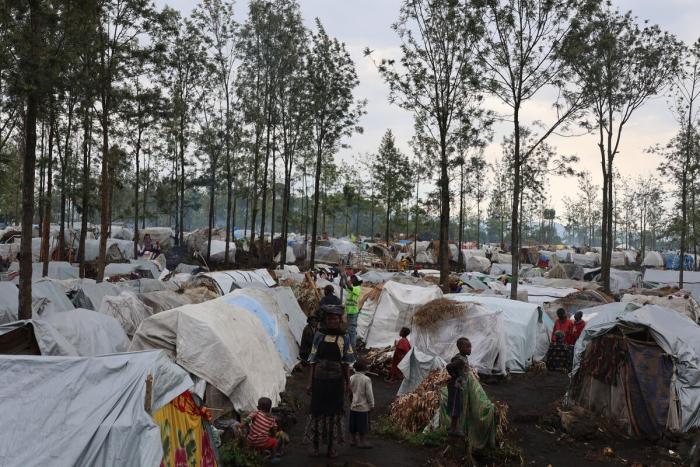2024 population planning figures
- Refugees and asylum-seekers in Angola, Burundi, the Republic of the Congo, Uganda, the United Republic of Tanzania and Zambia: 965,800
-
IDPs: 6.1 million
-
Refugee and IDP returnees: 2.3 million
-
Refugees and asylum-seekers in the DRC: 504,300
For the reported figures consult the dedicated page on UNHCR operational data portal.
As a result of an alarming resurgence of violence generated by armed groups, 5.8 million people are displaced across the provinces of Ituri, North Kivu, South Kivu and Tanganyika, in the east of the Democratic Republic of the Congo.
2024 Situation overview
The emergency in the Democratic Republic of the Congo (DRC) is one of the most complex humanitarian crises in the world. Decades of clashes between armed groups, widespread violations of human rights, and devastating incidents of gender-based violence have caused unprecedented levels of protection needs, vulnerabilities and risks, displacing 6.1 million people within the country and forcing 1 million to seek asylum across Africa. At the same time, the DRC hosts more than half a million refugees from neighbouring countries.
Since March 2022, insecurity in the eastern provinces has reached new heights, leading to an exponential rise in protection incidents, especially those involving sexual violence, and severe restrictions to the humanitarian space.
As a result of the concerning situation, in June 2023 an Inter-Agency Standing Committee system-wide scale-up was activated for eastern DRC; a month later, 24 UN entities came together to urge immediate action to protect women and girls. However, the response has been challenging, and the situation is aggravated by inflation, epidemics, natural hazards, food insecurity and funding constraints.
The drivers of displacement in the DRC are expected to worsen in late 2023 and 2024, with tensions emerging from the withdrawal of MONUSCO and the presidential elections in December likely to prolong displacement within the country and drive people into neighbouring countries as refugees.
In 2024, community-based protection and protection monitoring, analysis and reporting, health, education and livelihoods will remain key priority response areas, and UNHCR will continue to play a leadership and advocacy role in the Protection, Shelter and Non-Food Items and Camp Coordination and Camp Management Clusters in the DRC. In particular, the organization will strengthen gender-based violence prevention, risk mitigation and response mechanisms, disability inclusion, gender equality in addition to safeguarding the rights of the forcibly displaced, especially women and girls. UNHCR will also seek to ensure that at least 60% of IDPs, and all IDP returnees, are living in habitable housing.

Outside of the DRC, UNHCR will continue to promote resettlement opportunities and complementary pathways for refugees, and will support the voluntary repatriation of families in Angola, the Republic of the Congo and Zambia, if conditions allow for a safe and dignified return. Moreover, UNHCR will lead the Regional Refugee Response Plan (RRP), an inter-agency planning, coordination, and fundraising tool that brings together a wide array of partners to provide protection, assistance, and durable solutions to refugees from the DRC and their host communities in Angola, Burundi, Republic of the Congo, Rwanda, Uganda, the United Republic of Tanzania, and Zambia.
As set out in the RRP, and in accordance with the Global Compact on Refugees and the Refugee Coordination Model, host governments will steer the response, while RRP partners, led by UNHCR, will support and complement national and regional strategies, working closely with donors, development actors, the private sector, and civil society.
For the most recent stories, press releases and briefing notes, please visit the Emergency page on unhcr.org dedicated to the Democratic Republic of the Congo.
